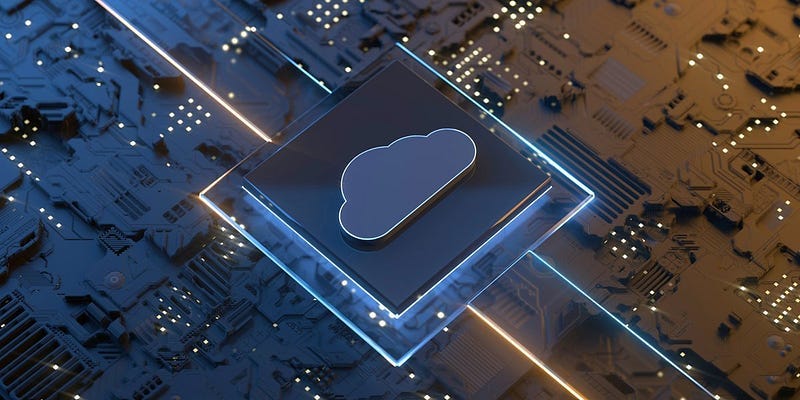Subscription Burnout & The Future Of SaaS Pricing Models
Netflix — subscription. Amazon Prime— subscription. Hotstar — subscription based. The Athletic — pay us a subscription fee. And ignoring…
Netflix — subscription. Amazon Prime— subscription. Hotstar — subscription based. The Athletic — pay us a subscription fee. And ignoring my Medium profile’s popularity, Medium could be clubbed into the list as well. However, Medium’s model is slightly different, which is usage based.
These days, there’s a f*cking subscription for everything.
Picture this, you’re in India and you eat some really spicy Indian food(Kolhapuri Chicken maybe) and the cafe/restaurant you’re at doesn’t have a toilet, what do you do?
Believe it or not, in India if you have to use the sparse & abject public toilets, they’re called “shauchalays”; you have to pay the dude sitting outside (only God knows how he tolerates the smell and stench) a small fee of 5–10 rupees to enter and use the public toilet. If you need to go again, you pay again.
So it’s fair to say that in India, even sh*tting requires that you pay a subscription.
But coming back, as we gradually progress into the future, we’ve slowly seen the next evolution of SaaS product development, and marketing, and so pricing dovetails and emerges as a critical factor in software consumption.
Over the past decade or so, we’ve seen a shift to pricing and selling SaaS products via a subscription model. The subscription model has gained considerable traction not only in the SaaS industry buy also filtering down to tech, gaming, media etc. and yes, the toilets of India.
But jokes aside, while this has its benefits, especially from a business’ perspective, which Chat GPT lists as:
Predictable and Recurring Revenue
Customer Retention and Loyalty
Cash Flow Benefits
Upsell and Cross-Sell Opportunities
Continuous Product Improvement
There are however, two sides to this debate when it comes to how a subscription model feels and sits from a customer’s perspective.
The main question is: Is a subscription model easier or more cumbersome to pay for either monthly or annually or is a one time payment for a lifetime better?
Chat GPT suggests the following pros of the subscription model from a customer’s perspective:
Affordability and Flexibility: For customers on a tight budget or those who prefer to spread out their expenses, a monthly or annual subscription can be more manageable. It allows them to pay smaller amounts regularly instead of making a larger one-time payment. This flexibility can make the product more accessible to a broader range of customers.
Access to Updates and Support: SaaS products typically require continuous updates, maintenance, and customer support. With a subscription model, customers have ongoing access to these benefits. They can receive regular updates, bug fixes, and access to new features as they become available. This can enhance the user experience and ensure that the product remains up to date and functional.
Perceived Value: Research suggests that customers often associate more value with a subscription model compared to a one-time purchase. The perception is that ongoing payments entitle them to continuous improvements, updates, and support. This can create a sense of investment and engagement, increasing the overall perceived value of the product.
Risk Mitigation: Some customers may be hesitant to make a one-time payment for a lifetime because they fear the risk of the product becoming obsolete or the company going out of business. A subscription model provides some assurance that the product will be actively supported and maintained for as long as the subscription is active.
But these pros aside, subscriptions can be very irritating. I’ve personally cancelled my subscriptions when I got fed up and restarted them when I needed them again. Quite frankly, monthly payments suck. I find that I’m forced to use the software or platform even when I don’t want to or want to take a break from it.
It gets to a case of weariness and fatigue. Apart from I guess Spotify for music listening purposes and Hotstar for sports streaming, I think every other subscription is a pain in the a*s after a certain point. But your preferred subscriptions are a matter of taste.
What I’m coming to is what I’d like to call “subscription burnout”. Considering the sheer number of online platforms we’re committed to paying a subscription for these days, it’s leading to considerable fatigue and tiredness from customers who are simply fed-up with managing all these subscriptions and being forced to use the platforms because of the commitment.
With so many recurring fees to manage, customers are getting overwhelmed and exhausted by the constant financial burden.
So where are we headed?
Back To The Good Old Days
If you’ve lived in the 90s and early 2000s you’d know exactly what the old pricing model for software and SaaS products was. One time. Pay up and use it forever.
Whether it was the next version of Windows or for PC games or the dreaded anti-virus software or maybe a DVD of your favourite movie, or a Playstation game, people would gladly pay up to use products for life.
Subscription burnout is seeing companies resort to the old system; it’s pretty prevalent in music software at the moment, especially for DAWs and for VSTs from top brands like Native Instruments.
The old model involves no monthly headache and gives customers a sense of ownership. But it depends on the SaaS product’s industry as well.
So we’re seeing the SaaS pricing change rapidly and some amount of shift back to the old model. So if you club the one-time payment with a 1 month trial — you’ve solved a problem, and used a hybrid strategy although, it’s not an old concept.
But what about innovations in the pricing strategies as we move into the future?
The Future Of SaaS Pricing
According to our AI friends, who are the buzz at the moment, and quite rightly so because they’re so formidable — Chat GPT suggests the following innovative pricing strategies:
Usage-Based Pricing: The trend towards usage-based pricing is likely to intensify. SaaS providers will offer flexible pricing plans based on the actual resources consumed by customers, such as the number of users, storage space, bandwidth, or API calls. This approach allows customers to pay for what they use and offers greater transparency and cost-effectiveness.
Personalized Pricing: SaaS providers will increasingly adopt personalized pricing strategies tailored to individual customer needs. This may involve offering customized pricing plans based on factors like company size, industry vertical, specific feature requirements, or usage patterns. By understanding the unique needs of each customer, SaaS providers can deliver tailored pricing options that align with their business objectives.
AI/ML Integration Pricing Tiers: With the growing integration of artificial intelligence (AI) and machine learning (ML) technologies into SaaS products, pricing models may evolve to reflect the added value these technologies provide. SaaS providers could introduce pricing tiers that correspond to the level of AI/ML integration. Higher-tier plans might offer advanced AI/ML capabilities, such as predictive analytics, natural language processing, or automated decision-making, while lower-tier plans may provide basic functionality.
Data Privacy and Security Premiums: Given the increasing concerns around data privacy and security, SaaS providers will likely introduce pricing tiers that emphasize enhanced privacy features and compliance with regulatory standards. Premium pricing plans might offer stronger encryption, secure access protocols, or additional data protection measures. This approach caters to organizations operating in highly regulated industries or those prioritizing data privacy, establishing trust and differentiation in the market.
Value-Based Pricing: SaaS providers may shift towards value-based pricing, where the cost is directly tied to the value delivered to the customer. This approach requires a thorough understanding of the customer’s business outcomes and aligning the pricing with the quantifiable benefits achieved through the use of the SaaS product. It enables customers to perceive the software as an investment that generates a positive return rather than just an expense.
Subscription Customization: To address subscription fatigue and provide more flexibility, SaaS providers might introduce customizable subscription plans. This allows customers to choose specific features, modules, or add-ons based on their requirements, paying only for what they need. By tailoring subscriptions to individual preferences, SaaS providers can increase customer satisfaction and retention.
Hybrid Pricing Models: In the future, we may witness the emergence of hybrid pricing models that combine elements of different strategies. SaaS providers could offer a mix of subscription-based pricing, usage-based pricing, and one-time payment options to cater to a broader range of customers and use cases.
So there you have it, this is how SaaS pricing is slowly evolving into its next iteration.
Let’s see how long the subscription model lasts, but I reckon it could dwindle in the coming decade as a result of this “subscription burnout”.
This is just my two cents.
Drop me a comment about what you think.





